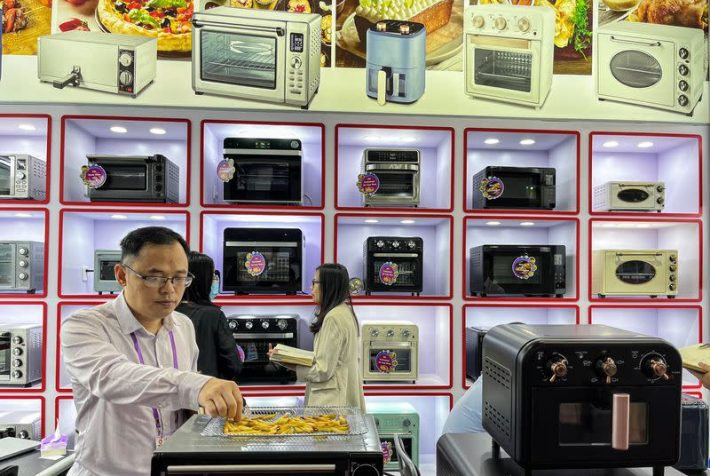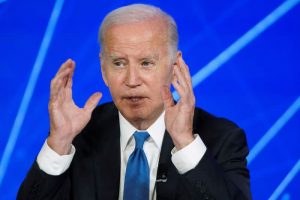The move last week by Chinese policymakers to boost consumption with a domestic trade-in scheme has surprised analysts, with many saying it opens the door to lower long-term growth.
News that the government will use 150-billion yuan ($20.7 billion) of long-term bonds to subsidize trade-ins on consumer appliances and electric vehicles is expected to boost household spending and help Beijing hit its 2024 economic growth target of about 5%.
But analysts say officials may have to do more for consumers from next year – or accept lower and slower growth. Trade tensions and local government debt risks leave Beijing few alternatives to revving up consumer stimulus in coming years, but vague promises of “incremental measures” look likely to fall short, they said.
ALSO SEE: Foreign Investment in ASEAN Tops China For First Time in Decade
Acting to bolster chronically weak domestic demand is understood, but analysts are curious if the country will depart from its decades of reliance on infrastructure spending and exports, which helped China create the world’s second-biggest economy.
The trade-in programme is the first time China has used funding from debt to directly support household consumption. Doubt on long-term positive outcomes stems from the fact the outlay amounts to just 0.12% of gross domestic product.
Further consumption stimulus is “plausible next year in the face of potentially stronger external headwinds”, Citi analysts said.
The switch from bridges to fridges, as its has been called, is driven by growing unease with China’s trade dominance, which has pushed the United States, Europe and emerging economies from Turkey to Indonesia to raise tariffs and place other barriers on Chinese products.
In addition, the authorities are growing wary of debt-funded projects as they increase scrutiny on heavily indebted municipalities. Most of China’s fiscal stimulus still goes into investment, but returns are dwindling and the spending has saddled local governments with $13 trillion in debt.
Local governments sold 1.49 trillion yuan ($200 billion) of the special bonds used to fund stimulus in the first half of the year, just 38% of the full-year quota, making China’s fiscal stance unexpectedly tight.
“The number of really good projects that produce stable income keeps getting smaller,” an economic adviser to the government said on condition of anonymity.
Export outlook worsening
China’s export outlook is likely to keep worsening, especially if Donald Trump returns to the White House, as the US former president and Republican candidate for November’s election has threatened tariffs of up to 60% on all Chinese goods.
Yue Su, principal China economist at the Economist Intelligence Unit, estimates that a 10% increase in US import tariffs could cut China’s real economic growth by 0.3-0.4 percentage points next year and in 2026.
“The urgency to stimulate the domestic economy is highlighted by increased external pressures, including the potential return of Trump,” she said. “A more decisive domestic-focussed policy and fiscal expansion could mitigate some of these effects.”
China’s household spending is less than 40% of GDP, some 20 percentage points below the global average.
To revive consumption just to its pre-pandemic trendline would require 3 trillion yuan to 8 trillion yuan ($400 billion-$1 trillion) in spending, Christopher Beddor, deputy China research director at Gavekal Dragonomics, estimates, who thinks that much stimulus is unlikely.
“The government’s track record of delivering on consumer stimulus is frankly pretty poor,” he said.
Xu Hongcai, deputy director of the economic policy commission at the state-backed China Association of Policy Science, said boosting demand sufficiently might need re-allocating 5 trillion yuan from investment projects to consumers.
“In the short run, 5 trillion yuan in stimulus would be forceful,” Xu said. “But in the long run, we need to improve the proportion of income of urban and rural residents by 20 percentage points of national income.”
- Reuters with additional editing by Jim Pollard
ALSO SEE:
China to Use Bonds to Pay For Consumer Trade-in Scheme
Surveys Show Chinese Factories Facing Gloomy Outlook Risks
China’s Private Capital Fundraising Hits Record Low in Q2 – SCMP
US Forced To Delay Tariff Hikes on Chinese EVs, Batteries, Tech
Chinese Firms Seen Shifting Production Abroad to Avoid US Tariffs
Trade War Heating Up: China Hits Back After Biden Boosts Tariffs
























